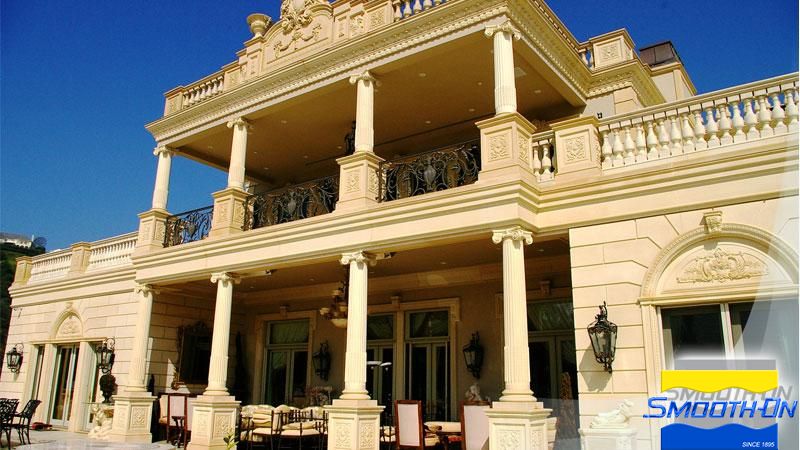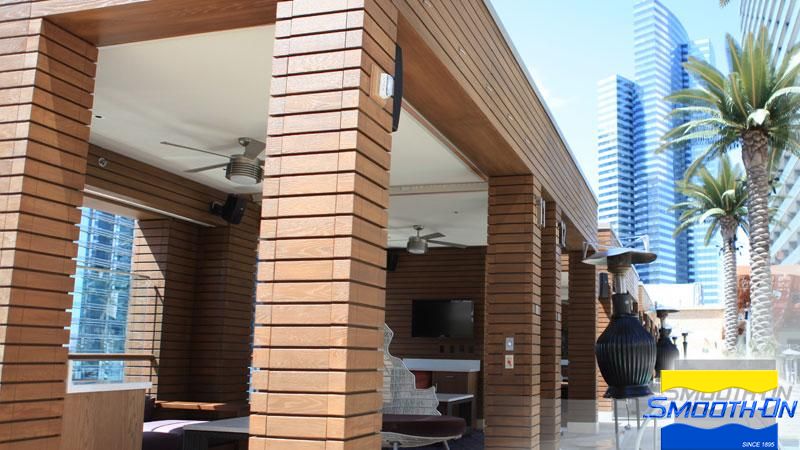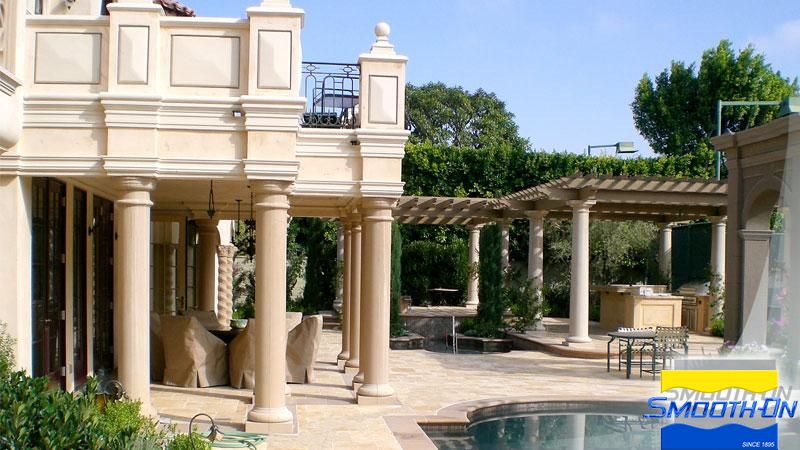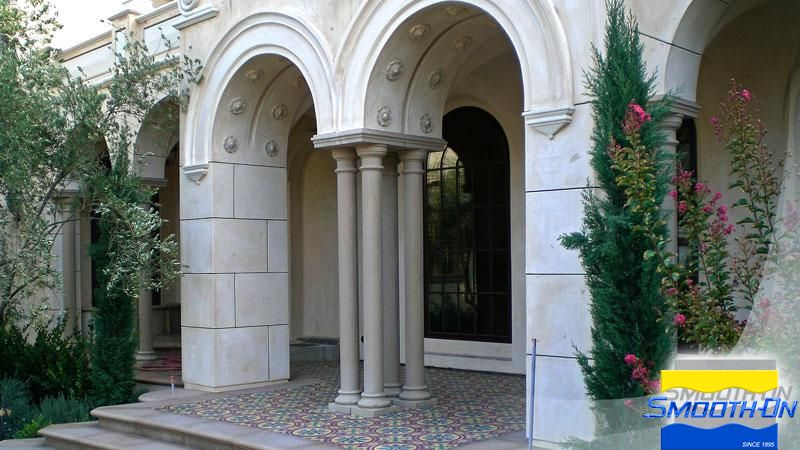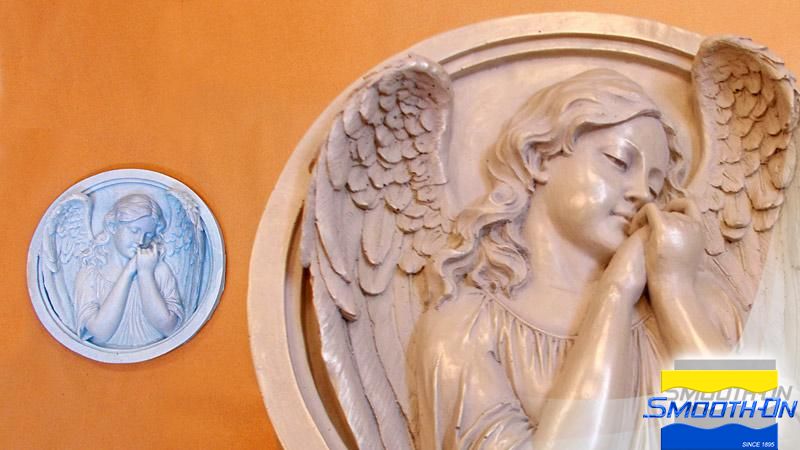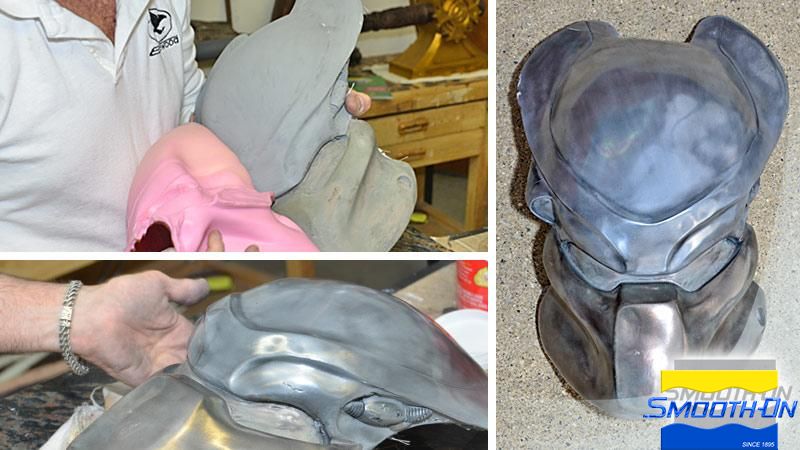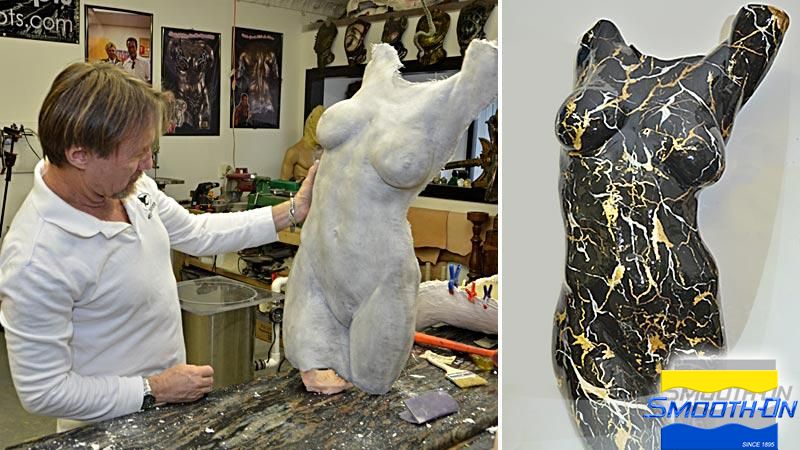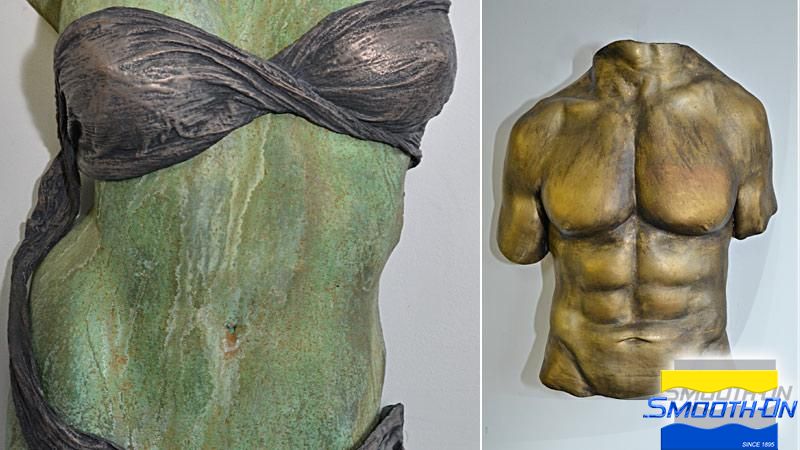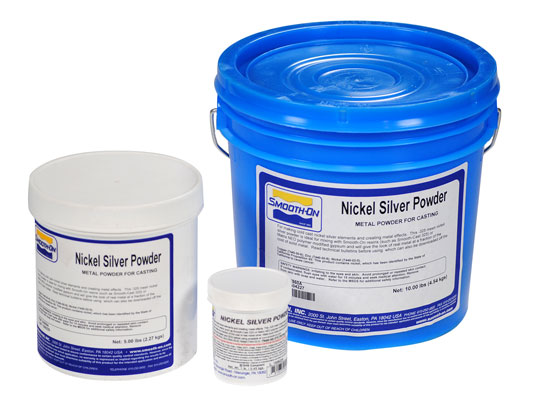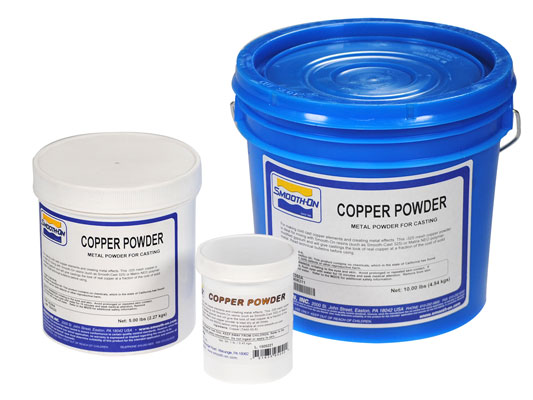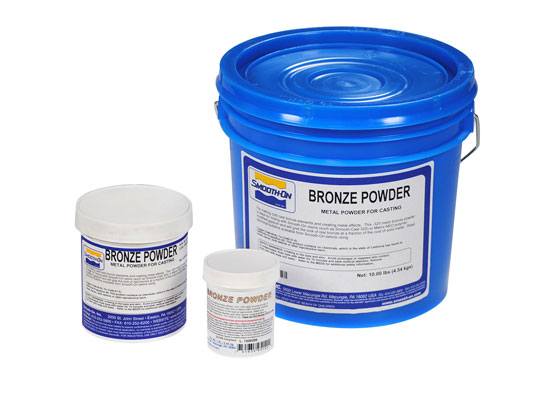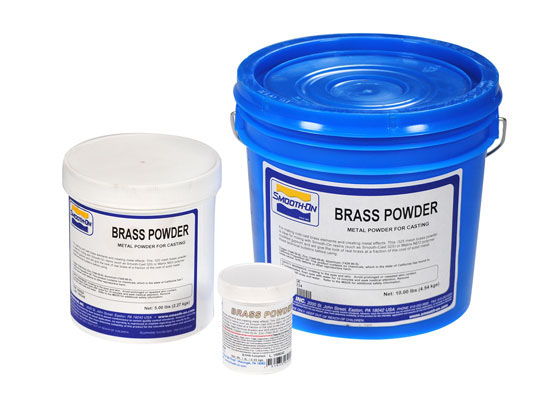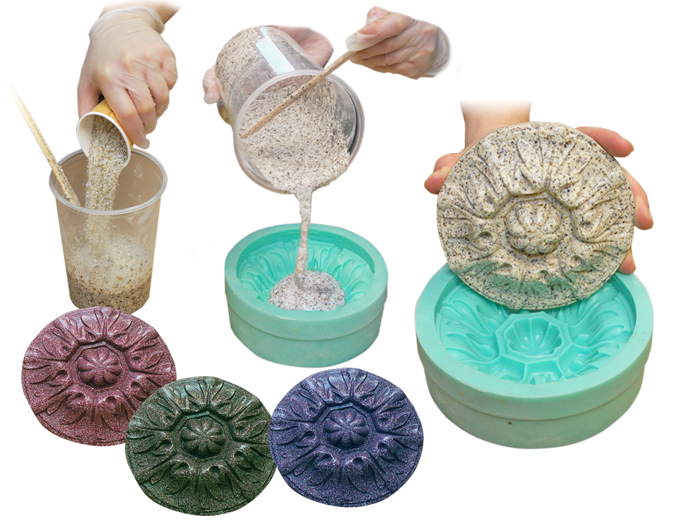Forton® MG
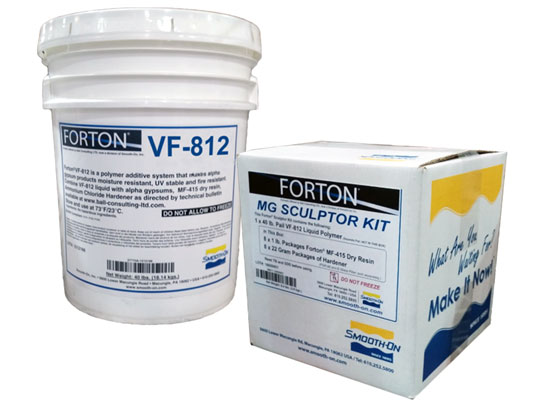
Forton®MG系统易于使用,并且可以浇筑固体、旋转浇筑、手工玻璃纤维层压或喷涂。完全固化的部件可以涂漆、打磨、机加工和抛光。FMG用于制造非常坚固且防水的轻质部件。应用包括制作建筑元素、复制雕塑和特效。
数量较多时,FMG组件单独出售。请致电Smooth-On或当地的经销商了解价格和供货情况。网上商店提供Sculptor Kit,包括:40磅VF-812,8磅MF-415,176克固化剂(不包括α石膏或可选的E-Glass)。
特征
- Forton®MG系符合ASTM E-84,A级(或1级)建筑材料的阻燃等级。
- 通过添加颜料可以实现鲜艳的色彩。
- 添加金属粉末(青铜,铜等),只需花费一小部分成本即可获得真正的金属浇注件外观。
说明
Handling & Storage - Store and use material at room temperature (73°F/23°C). These products have a limited shelf life and should be used as soon as possible. Colder temperatures will slow the working/cure times, while warmer temperatures will reduce working times. Individual components should be stored in a dry environment at room temperature. Humid conditions will cause gypsum and resin to lose effectiveness. Do not allow the liquid VF-812 to freeze.
Mold Preparation - If casting or laying up into a urethane rubber mold, first apply a release agent such as Ease Release® 2831. Newly mixed Forton® MG can be released from another Forton® MG surface using a minimum of three coats of Sonite® Wax. If you want to paint your finished casting, we suggest using a silicone rubber mold (Mold Max® Silicone), as no release agent is required to facilitate demold.
Because no two applications are quite the same, a small test application to determine suitability for your project is recommended if performance of this material is in question.
Required Materials - Assemble all components and accessories before you begin. You will need:
- Forton® MG System Components (See Description Below)
- Measuring Containers
- Mixing Containers
- Weighing Scale (Digital Gram or Triple Beam Balance)
- Mechanical / Power Mixer (Jiffy or Hanson Mixer)
- NIOSH Approved Dust Mask
- Window Screen Or Similar For Filtering Mixture
System Components - The Forton® MG System consists of four components (an alpha gypsum and three specialty additives).
Component 1 - Alpha Gypsum: You cannot use just any gypsum/ plaster product. You must use an Alpha Gypsum such as FGR 95 from USG Corp., Densite HL from Georgia Pacific, Crystacal R from British Gypsum or equivalent.
Component 2 - VF-812: White liquid. 50% solids polymer that crosslinks with Component 3 and gives Forton® MG water resistant properties.
Component 3 - MF-415 Resin: Fine white powder. Enhances physical properties of the overall mix.
Component 4 - Ammonium Chloride Hardener: Crystalline Powder - looks like sugar. Added as a pH adjuster to ensure the proper cross linking of the VF-812 and the MF-415 Resin.
MEASURING & MIXING - Important: Use only fresh materials. Old materials (gypsum, polymer) will give inconsistent results.
To minimize dust inhalation, we recommend wearing a NIOSH approved dust mask while weighing and mixing components. An accurate scale (gram scale or triple beam balance) is required to be successful with this product. Do not use a postal, dietary or bathroom scale to weigh components.
Important: Components must be mixed in proper sequence. A power mixer should be used to mix all components.
Step 1: Shake or stir VF-812 well. Dispense required amount into mixing container.
Step 2: Combine All Dry Ingredients: Combine Alpha Gypsum + MF-415 + Hardener by weight into a suitable size mixing container. Mix dry components thoroughly with mixing paddle, power mixer, etc. until well blended. If adding fillers such as bronze powder, blend with dry components before adding to VF-812.
Step 3: Sift dry ingredients into VF-812 liquid and mix all components with a power mixer. Continue mixing until all dry powder components are thoroughly dispersed (minimum 90 seconds).
Mix Design - Component quantities will vary depending on the size of the batch you are making. Below is a standard Forton® MG mix design:
| Parts By Weight | |||
| Alpha Gypsum | VF-812 Polymer | MF-415 Resin | Hardener |
| 100 | 50 | 10 | 0.48 |
Working times and demold times will vary depending on mass, environmental temperatures and use of accelerator.
Accelerating Forton® MG - The set and demolding times of the FMG system can be reduced by the use of an accelerator. For hand layup a solution of 1 lb of FMG Accelerator (Aluminum Sulfate) into 10 lbs of water can easily be made.
Mix the Forton® MG components into a creamy slurry. Then add the accelerator while mixing. A good starting point is to add 1 tablespoon of accelerator for every 10 lbs of gypsum in the mix. The goal is to add just enough to accelerate the set time but not cause a snap set. Note: Local conditions and mix design can affect the strength of an accelerator. Experimentation will be required.
Retarding Forton® MG - Some applications may call for a large quantity of Forton® MG to be mixed and poured in a single mold (mass casting) or for “master batching” (a large amount is mixed and poured into many different molds for production casting). To achieve the longer working time and demold time necessary for these applications, citric acid can be added to the mix. A good starting point is to add citric acid in a quantity of 0.05% of the weight of the gypsum in the mix. The citric acid should be premixed into the VF-812 prior to adding dry components.
POURING & APPLICATION - After thoroughly mixing components, the mixture is ready to be poured into a mold. For best results:
1. Pour a small amount of the Forton® MG mix into the mold and brush or slush a face coat on all surfaces. This helps to break surface tension and ultimately reduce air bubbles. Tip: Slowly pour the face coat material through a window screen, kitchen colander or equivalent. This helps to eliminate any clumps or unmixed material that could affect the surface finish.
2. After a face coat is applied, the remaining mixture can be slowly poured into the mold.
Further Reducing Entrapped Air - Air bubbles are sometimes a concern with polymer modified gypsums and will vary depending on conditions. There are additional steps you can take to help reduce entrapped air:
1. Vibration - By placing the filled mold on a vibrating table, air will rise and dissipate from the mold surface.
2. Pressure - Requires pressure vessel and compressor. After mixture is poured into mold, place mold in a pressure vessel and subject mixture to 60 PSI (4.2 kg/cm2 ) air pressure for one hour. NOTE: Molds must also have been cured under the same pressure. Otherwise, when the Forton® MG is pressure cast in the mold, air bubbles trapped in the rubber will compress and the casting will be distorted. Pressure Casting is the only way to completely eliminate bubbles from your mix. Vacuuming material does not work.
Making Architectural Elements - Hand Lay-Up Technique - Forton® MG can be reinforced with all typical “E” glass fiber reinforcements used in the composites industry. This includes continuous strand surfacing mats up to bi-axial and tri-axial woven glass fiber fabrics. Therefore, Forton® MG can be used in a wide range of production/laminating processes. ASTM 1355 requires that a minimum of 5% glass fiber reinforcement is used. The flexural properties of Forton® MG are very responsive to the amount and type of glass fiber reinforcement used, up to 15% of the composite weight.
Hand Lay Up Using Fiberglass Matting - For best results, use ¾ oz. or 1 oz. Chopped Strand Mat or Continuous Strand Mat. Mix Forton® MG at the “standard” mix design and brush a face coat into a mold. Let set until the appearance starts to turn from shiny to dull, or until you can no longer see your fingerprint if touched. Mix another batch and brush a layer over initial face coat. Lay matting over Alpha Gypsum VF-812 Polymer MF-415 Resin Hardener 100 50 10 0.48 fresh material and let material penetrate matting. Brush with a clean paint brush, applying light pressure over surface to minimize entrapped air. After a uniform coating is attained, apply another layer of matting and brush again. Apply a minimal amount of Forton® MG - just enough to wet out the surface. Repeat as necessary until 3/8” (10 mm) thickness is attained.
Hand Lay Up Technique Using Chopped Glass - Another technique for making strong, lightweight elements is to mix chopped fiber directly into the Forton® MG standard mix. Adding chopped fiber takes much less time than layering chopped matte. The chopped fiber will be added to the mix as a percentage of the total weight. Fiber can be added in concentrations of 5% to 12%.
How To Proceed - A face coat should first be applied to the mold surface. This initial coat should be the standard Forton® MG mix design and contain no fiber. This ensures a fine surface finish with no exposed fibers. Next, a backup mix can be created that will have fibers added. Calculate the total weight of Forton® MG required for the backup mix. Based on this, calculate and dispense the amount of fiber needed (5%-12% of the total weight). Fibers should be added to a thoroughly mixed Forton® MG Slurry. Mix thoroughly with a power mixer until fibers are uniformally dispersed. Do not overmix. Apply mixture with gloved hand or spatula over face coat. Another application may be required to attain 3/8” (10 mm) thickness.
Post Finishing - After elements have fully cured, they can be sanded or sand blasted to achieve the desired surface texture. “Wet Sanding” is advisable to minimize dust particles and build up on sand paper.
For Exterior Use, Apply A Sealer - Because the Forton® MG system substantially reduces the water absorption rate of alpha gypsums, elements made with Forton® MG are suitable for exterior use. Elements must, however, be sealed with a suitable sealer such as Prosoco Sure Klean® Weather Seal SL100. Elements can also be painted with an outdoor acrylic paint.
Making “Cold Cast Bronze” Elements - Reproducing the look of bronze is a common application for Forton® MG because you can achieve the look of real bronze at a fraction of the cost. For making solid castings, the following proportions will work well. –325 mesh bronze powder is recommended and should be pre-mixed with dry Forton® MG components prior to adding to VF-812.
| Parts By Weight | ||||
| Alpha Gypsum | VF-812 Polymer | MF-415 Resin | Hardener | Bronze Powder |
| 100 | 70 | 10 | 0.48 | 150 |
Optional: Pigments can be added to the system to affect the finished look of the cold cast part. For example, adding a dark pigment (black or dark brown) to the mix will give the final casting added definition and dimension when working with bronze powder. Powdered iron oxide pigments and SO-Strong® color tints work well with the Forton® MG system.
Metal powders (bronze, copper, brass, nickel silver, etc.) are available from Smooth-On or your Smooth-On distributor.
Post Finishing Cold Cast Bronze Elements - To bring forth the metallic finish, buff with 0000 steel wool. Patina coloring can then be achieved using various cold patinas. Casting should be sealed with wax, lacquer or clear acrylic spray to prevent oxidation.
Adding Pigments And Fillers - Because Forton® MG blends easily with different materials, realistic effects can be achieved with the addition of various pigments and/or fillers. Liquid or dry pigments can be added during mixing. Other metal powders can be added to attain specific metal finishes (copper, pewter, silver). A marble finish can be attained by adding marble dust (calcium carbonate), 150 parts by weight to original mix formula. Quarry Tone® fillers from Smooth-On can be added to give a granite look. Adding malachite will give a realistic porcelain finish. Wood grain finishes can be attained by adding powdered pecan shells or similar fillers. Metal powders and fillers are pre-mixed with dry components by weight. Amount of filler to be added depends on desired effect. Some experimentation may be necessary.
